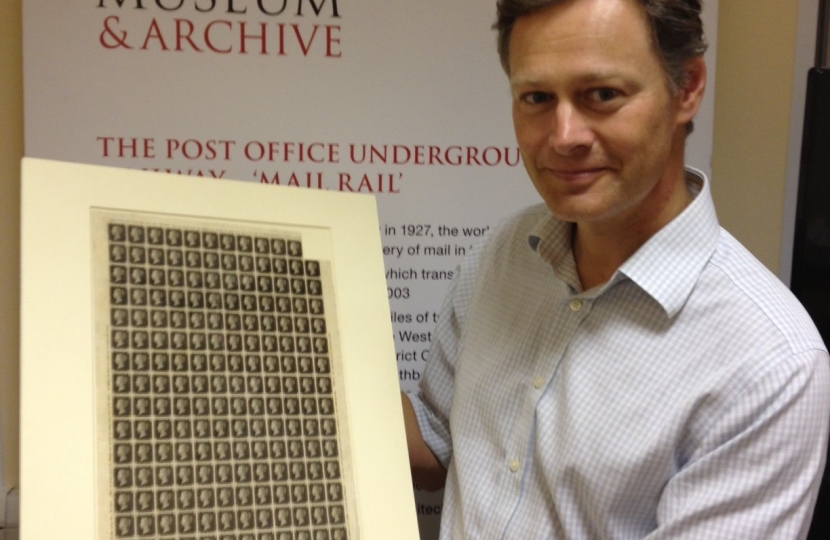
Following representations made by a constituent, Matthew recently visited the British Postal Museum and Archive in central London to see for himself how the nation’s postal heritage is being preserved. Described by the Mayor of London as “a national treasure of global importance”, the BPMA is the leading resource for all aspects of British postal heritage. The collection and archive contains over 60,000 artefacts and has 2.5 miles of archives.
Under a scheme endorsed by the Government and backed by leading heritage organisations, the BPMA is planning to construct a new postal museum and archive which will allow greater access for the general public to view the collection. Sited adjoining the country’s oldest mail centre at Mount Pleasant, the purpose built repository will feature exhibition spaces as well as space for exhibits such as postal vehicles, pillar boxes, staff records, posters, photographs, uniforms, weapons and the nation’s collection of stamps.
But the best kept secret of the Museum is that it has its own railway system. Mail Rail was the first electrified driverless railway system that transported mail under the streets of London from 1927 until 2003. Part of the construction plans for the Museum is to open up part of the railway tunnels so that visitors can become passengers on the Mail Rail.
Matthew said: “Many people have an interest in the postage system and stamp collecting but the BPMA holds a veritable history of stamps in this country and the postal service itself. The Museum even has a Victoria Cross that was awarded to postal worker Alfred Knight of the 2/8 London Regiment of the Post Office Rifles during World War 1. I am very supportive of the Museum’s plans and believe that the unique experience of the Mail Rail would encourage a greater range of people to visit what is one of this country’s greatest assets.”
Photo: Matthew is pictured with a unique sheet of Penny Black stamps, first introduced in 1840
